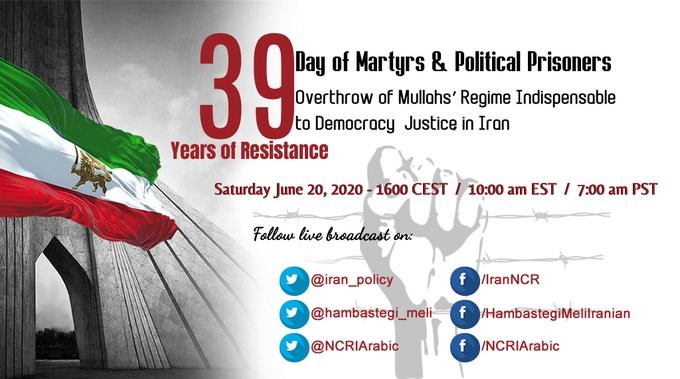To End Iran Regime’s Malign Activities, Start With Its Worst Crime

Written by
Shahriar Kia
Pictures of some victims of 1988 Massacre in Iran
The United Nations General Assembly will be held in September. One of the current important global topics, is Iran. As the Middle East and the international community suffer from terrorism and human rights abuses, forming a united front against the mullahs’ regime, the largest state sponsor of terrorism and the record holder of execution per capita, is urgent.
The regime is widely recognized as the world’s leading state sponsor of terrorism, and this is obviously a strong incentive for multilateral action, especially among those who risk becoming targets of that terrorism. Much of the Iranian regime’s terrorist activity is channeled through an elaborate network of allies and proxies, this indicates that how far the world’s demands for accountability should go.
The Iran-backed terrorism should be a major topic of conversation at the UNGA. The UN member states can find more common ground with one another by leading off the discussions with an account of malign activities that are both indefensible and undeniably the purview of the regime’s authorities, and no one else.
Sadly, Iran’s domestic human rights violations have not typically received this treatment due to the appeasement policy. The democratic nations of the world have a moral imperative to make these a top priority in international policy discussions. And it certainly doesn’t hurt that there is practical value in doing so, as well. To the extent that anyone actively stands against holding the Iranian regime to account for its foreign terrorism, their bias would be exposed for all to see if they were first challenged to defend some of the worst crimes against humanity to take place since the end of World War II.
This is how some experts have described the Iranian regime’s massacre of political prisoners in 1988. In fact, an audio recording made by the official who was then Ruhollah Khomeini’s heir-apparent reveals that this was how some eyewitnesses to the massacre viewed it while it was still taking place. The official, Hossein Ali Montazeri, called the months-long campaign of mass executions “the worst crime of the Islamic Republic.”
The recording in question was not leaked to the public until 2016, but when it was it helped to confirm some of the most shocking details, including the fact that victims included pregnant women and children as young as 13. Much of this was already exposed, though, as the People’s Mojahedin Organization of Iran (PMOI-MEK) had presented countless testimonies from survivors of the massacre over the years. The MEK, had been the main target of the massacre, and the overall death toll for the 1988 massacre was over 30,000 individuals.
Tehran has made various attempts to justify the killings in retrospect. But the fact is that one eyewitness after another has come forward to confirm that when people were taken before “death commissions” in Iranian prisons, they were not presented with evidence of serious crimes, but were simply asked to declare their political affiliations and their views toward the theocratic dictatorship. Those who proclaimed commitment to the MEK and did not succumb to the regime’s demands, were summarily executed. In many cases, their trials lasted only a few minutes, and their hangings were carried out in groups.
The 1988 massacre and the impunity the mullahs’ regime has ever since enjoyed, set a pattern for the subsequent three decades of crackdowns on dissent. And that pattern is still ongoing, as evidenced by the authorities’ response to a pro-democracy uprising in November 2019, which left 1,500 peaceful protesters dead and thousands in prison.
The continuity of these human rights abuses can be attributed to a sense of impunity that has settled on the Iranian regime. This in turn stems from the fact that the international community has consistently failed to give the massacre the prominence of place that it deserves in international policy discussions about Iran and its ruling regime.
To date, not a single person has been held accountable for the killings, even though a number of perpetrators remain alive and firmly established in the regime’s leadership structure. Both the current head of the judiciary and the current Minister of Justice served on death commissions in 1988. Their actions today leave little doubt that they stand by the political violence that became such blatant state policy at the time.
The same can be said of the entire regime’s actions. Its domestic political violence is just the other side of the coin from its foreign terrorist operations. But the evil behind the 1988 massacre is more blatant than most anything else. So, the international community must hold the Iranian regime to account for its crime against humanity in 1988.

